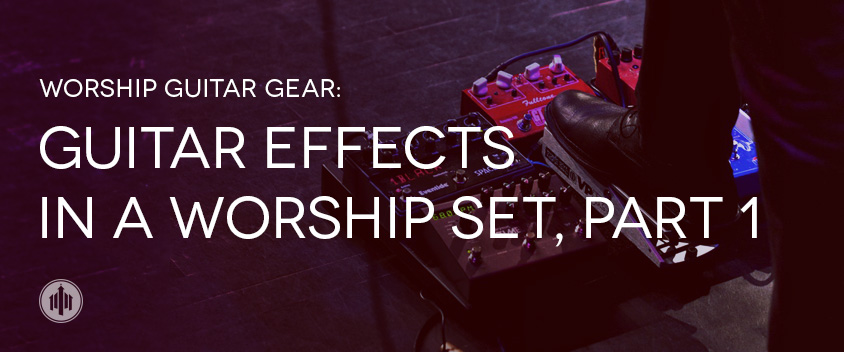
With every release of a new album, we are seeing the use of guitar as the main instrument in our worship songs more and more. Over the years, we began to see a transition where songs were being formed around a rhythmic piano or a giant 100 member choir, to a full on, overdriven, delayed out guitar. As the times advanced, so did the creativity of writing and composing.
Todays style of contemporary worship songs are more centered around, musically, the guitar. The main recognizable riff of the song will usually come from your guitar player. As this progresses, we find the need to emphasize the guitar, as of course, it has now become the main instrument. But how do we do this? And more importantly, how do we do this effectively so that it works within what everybody else still has to play to make the song sound the way it was intended?
Too often we take too far of a leap into the guitar led worship song world, that we forget about the other instruments. And now the song doesn’t sound the way it was suppose to because suddenly, the massively delayed guitar is too much to handle.
We have the need for the guitar effects to be present in our mix, but don’t want them to be over powering. So how do we do this? Here are some simple and easy tips for your guitar players to have the sound they desire, while still remaining appropriately ‘mixed’ in the song.
The Clean Tone:
This is the foundation to any sound you may want to have down the road. Without refining your clean sound, you are opening yourself up to more hassle than intended. Everything pedal you stack on top of a bad clean tone is directly effected. So you may think your overdrive pedal doesn’t sound good on a particular song, but really it was something in your clean sound negatively effecting the overdrive all along. I spend more time making sure my clean tone is right more than anything else. This way I know, if something doesn’t sound right later on, I can eliminate that. Creating a well balanced clean sound comes from playing and listening. A lot of it. You want to hear all of the strings evenly when strummed, and definition when picked. This may take some time to fine tune, but when you do, the results will amaze you.
Some helpful tools to creating a great clean tone are using buffers, compressors, and what I call super light overdrives. Ones that have so little drive in them that it creates more of a volume boost thats hits the front of your amp creating a really awesome clean, slightly gritty clean sound.
Buffers:
Compressors:
Walrus Audio Deep Six Compressor
Greer Amps Fish Press Compressor
Super Light Overdrives:
Overdrives:
Overdrives are important. They bring our sound more forward in the mix, and give us the necessary sustain and dirt needed to make the song sound good. But how do we determine whats a good overdrive and whats bad? Aren’t they all the same? No! This is always my main concern when playing.
Some songs just need a slight boost. Some a tiny bit of grit. Some a lot. Some even more. How do we ever determine which pedals to use and when too much is just too much.
A helpful tip is to think of your overdrive pedals in stages of gain. By stacking together a combination of pedals, we can create that ultimate sound we are looking for by involving good qualities from multiple pedals, rather than just trying to accomplish the goal by over cranking one small pedal.
Start by creating a first stage overdrive. Your amp is more than likely already at the point of breakup and only a small amount of overdrive is needed here. This amount can give you enough of a boost to be louder than your clean sound, while adding a small decent yet conservative amount of drive to take care of the lighter portions of songs. i.e. versus.
Next, establish a nice crunch with a second stage overdrive. This doesn’t mean add more gain on this pedal, but by stacking small amounts of gain from one pedal to another accomplishes the same goal but leaves the necessary headroom to be flexible and still maintain a well balanced drive.
After this you can get creative with a third stage overdrive, or what I would consider a slight boost on top for louder section/solos. Too much gain isn’t needed here as you’ve already accomplished that with the other two overdrives, but rather a small amount of boost to put you just on top of the mix when needed.
Overdrives:
Greer Amps Lightspeed Overdrive
Bondi Effects Sick As Overdrive
Mad Professor Little Green Wonder
I hope this helps you understand the importance of guitar effects in a worship set, and the proper application of those effects. Next time we will tackle delays and reverbs and other effects. Until next time…

